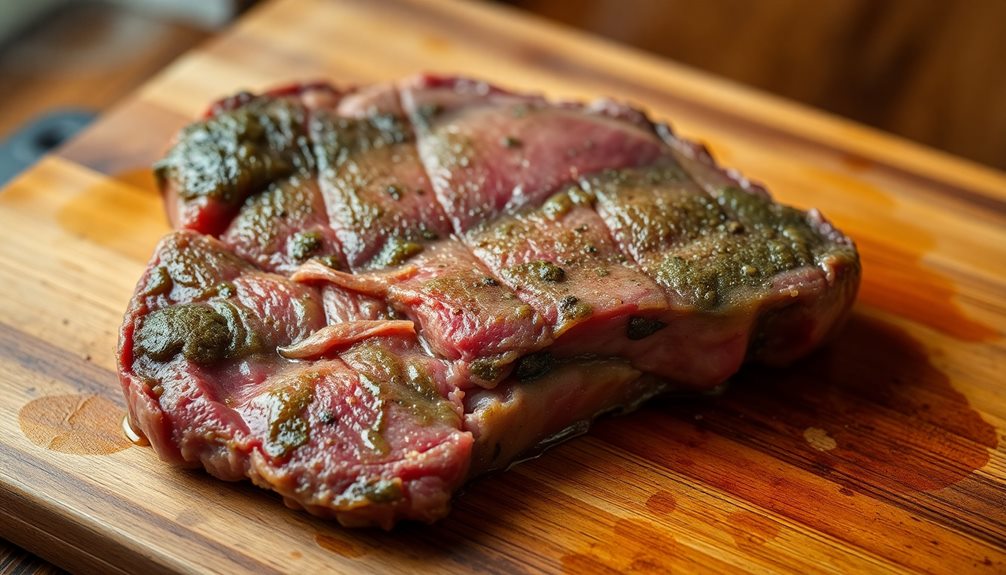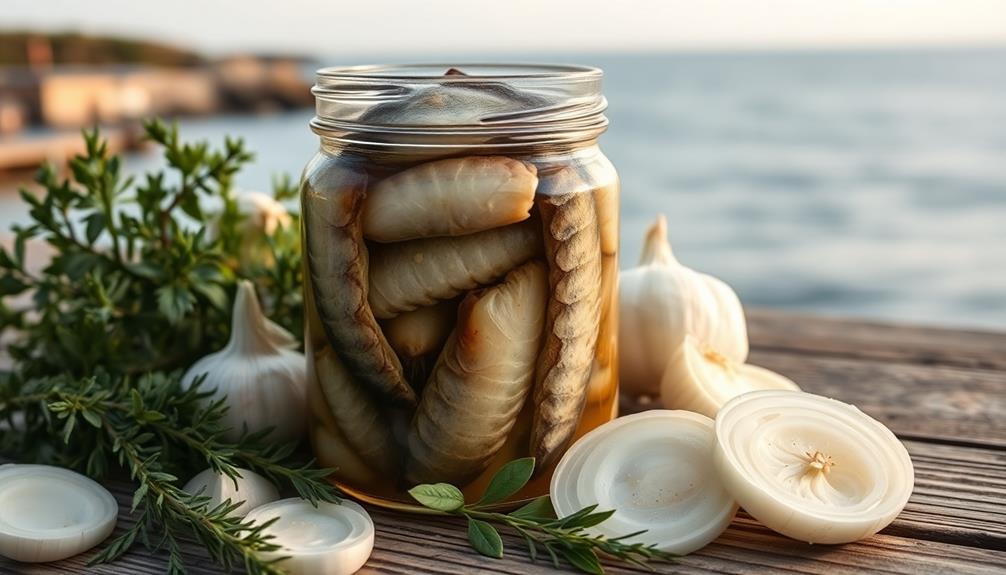When steak goes bad, it gives off a strong, unpleasant smell that tells you it's time to toss it. You might notice a sour odor, similar to vinegar, or a pungent scent resembling ammonia. Sometimes, it can even have a metallic smell or a faint hint of rotten eggs due to bacteria breaking down its proteins. Fresh steak usually has a mild, meaty aroma that makes your mouth water! Keeping it stored properly can help prevent these unpleasant odors. Stick around, and you'll discover more tips to keep your steak delicious and safe for your next meal!
Key Takeaways
- Fresh steak should have a mild, meaty aroma; any strong or sour smell indicates spoilage.
- A pungent, ammonia-like scent suggests bacterial breakdown of proteins and fats.
- Metallic odors can signal deterioration and potential spoilage of the steak.
- Sulfur compounds may produce a rotten egg smell as the steak ages.
- Lactic acid contributes to sour odors, which are common signs of spoilage.
Introduction

When you open your fridge and catch a whiff of something off, it might just be that steak you've been saving. You know, the one that looked so fresh when you bought it? It's easy to overlook how long it's been hanging out in there, and that smell could be your first clue that something's not right.
Steak is a delicious treat, but it can spoil quickly if you don't store it properly. When it goes bad, it can turn from a mouthwatering meal into a potential health risk. You don't want to indulge in a meal that could lead to an upset stomach or worse.
Understanding the signs of spoilage is key to keeping yourself and your family safe. In this article, we'll help you identify those warning signs, starting with that unmistakable smell.
By being aware of what to look for, you'll feel empowered to make smart choices in the kitchen. You'll learn how to keep your steak fresh, so it's always ready for a tasty dinner.
Description of the Smell

A distinct odor often signals that your steak has gone bad. When you open the package, you might notice a sour smell that's hard to miss. It's not the mouthwatering aroma you expect from fresh meat! Instead, it can hit you with a pungent, almost ammonia-like scent that makes you wrinkle your nose.
You may also catch a whiff of something metallic, which isn't comforting at all. If the steak has been stored for too long, it might even smell like rotten eggs. Yikes! These odors can make your stomach turn, and rightly so. Your senses are telling you to steer clear.
Keep in mind that fresh steak should have a pleasant, meaty smell—not anything off-putting or rancid. If you detect an unusual odor, trust your instincts and avoid cooking or eating it. Spoiled steak can lead to foodborne illnesses, and you definitely don't want that!
Source and Composition
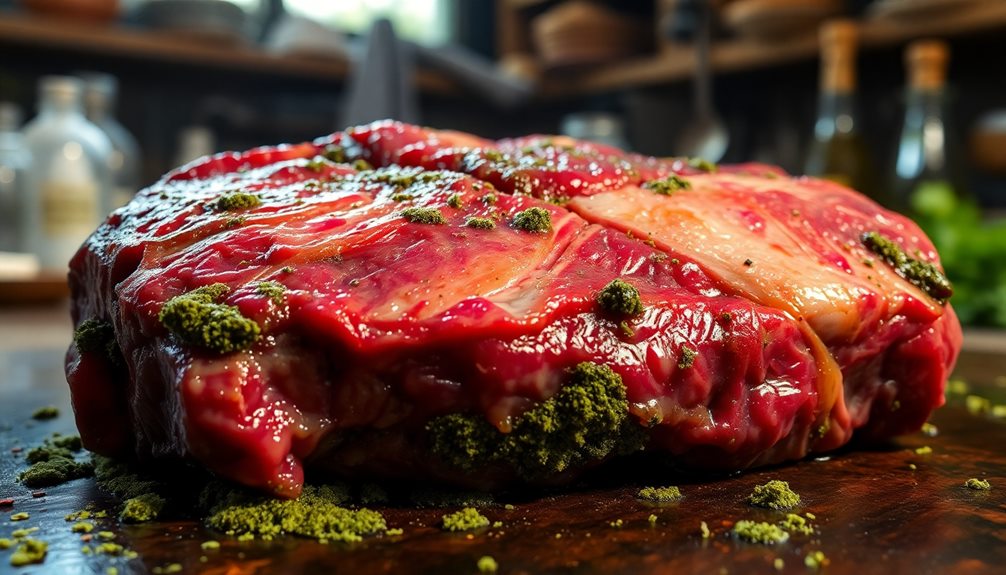
Understanding the source and composition of steak can help you recognize why it develops those unpleasant smells when it goes bad. Fresh steak is made up of proteins, fats, and water, giving it that delicious flavor and aroma.
However, as it ages, bacteria start breaking down these components. This process can lead to the creation of smelly compounds that signal spoilage.
When steak spoils, it often produces sulfur compounds, which can smell like rotten eggs. You might also notice a sour odor coming from lactic acid, which forms as bacteria thrive on sugars in the meat.
Additionally, amines, which are nitrogen-containing compounds, can create an off-putting smell reminiscent of ammonia. All these changes happen because microorganisms feast on the meat, leading to a breakdown of its natural composition.
If you pay attention to these smells, you'll have a better chance of catching spoilage early. Trust your nose! Fresh steak should smell like a mild, meaty aroma.
If it starts to smell sour or intensely funky, it's best to toss it. Remember, your health is more important than any meal!
Typical Scenarios or Environments

In various scenarios, the environment where steak is stored can significantly impact its freshness and the development of unpleasant smells. If you leave steak out on the counter for too long, the warm temperature encourages bacteria to grow, leading to that awful odor.
Imagine opening your fridge and finding a forgotten steak tucked behind some leftovers. The cool but not cold temperature might slow down spoilage, but it won't stop it completely.
Storing steak in airtight packaging can help keep it fresher for longer, as it limits exposure to air. If you vacuum-seal your steak and place it in the freezer, you can prevent those nasty smells for months!
However, if you store it improperly, even in the freezer, freezer burn can occur, ruining the texture and flavor.
Lastly, consider the environment of your kitchen. A humid area can also speed up spoilage. It's essential to keep your kitchen clean and dry, ensuring that your food stays safe.
Emotional or Cultural Associations
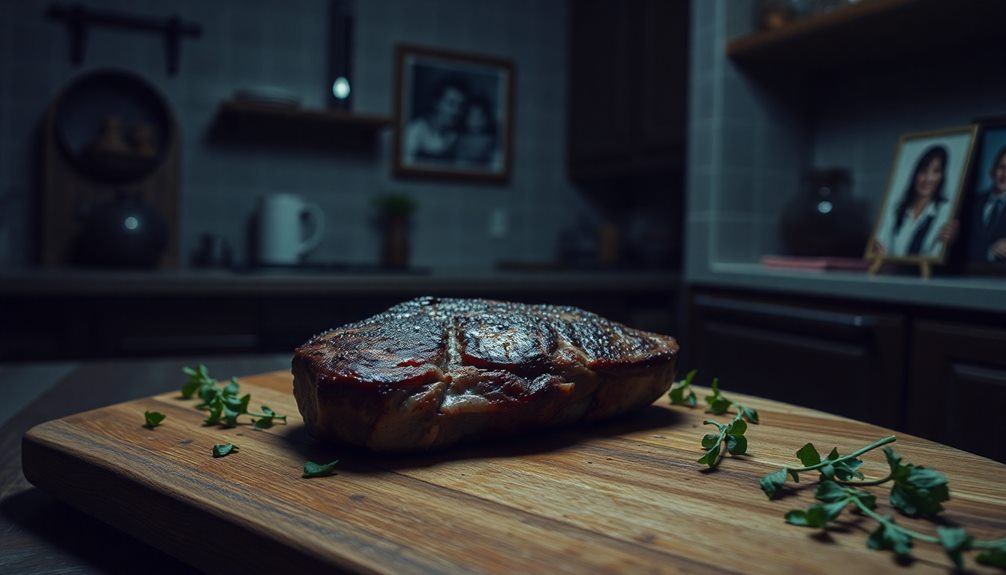
Steak often carries emotional and cultural weight, symbolizing celebration and comfort in many households.
Picture this: the sizzling sound of a steak cooking on the grill, the mouthwatering aroma wafting through the air, drawing family and friends together. For many, this scene evokes fond memories of gatherings, birthdays, or even just a cozy dinner at home.
In different cultures, steak can represent various traditions. In some places, a perfectly cooked steak is the centerpiece of a festive meal, showcasing love and hospitality.
It's not just food; it's a way of connecting with loved ones, sharing stories, and creating lasting memories.
When you think of steak, what feelings arise? Perhaps it reminds you of a special occasion or a comforting meal after a long day.
These emotional ties make steak much more than just a piece of meat. It's a symbol of joy and togetherness, often bringing smiles and laughter to the table.
Health or Safety Considerations
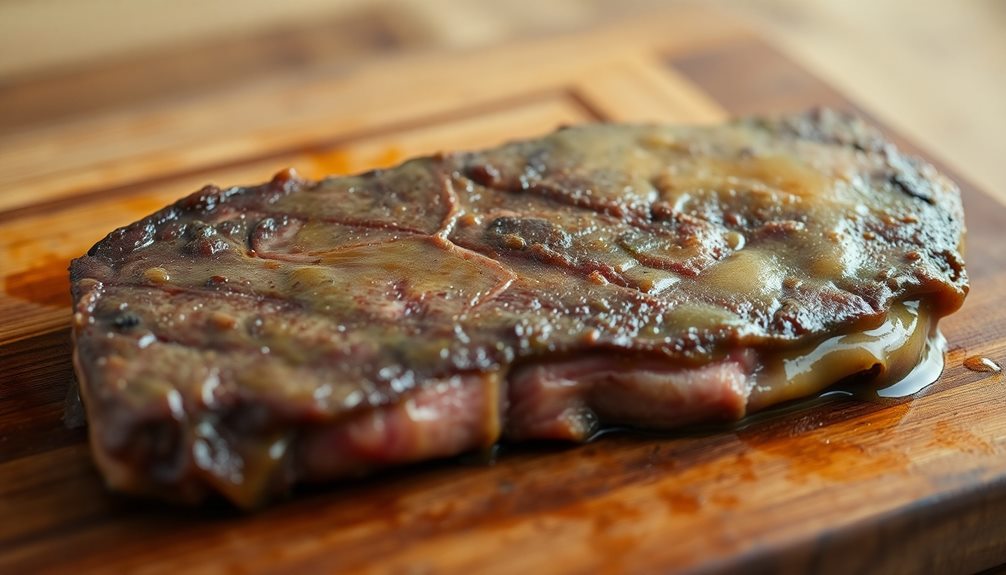
Food safety is crucial when it comes to enjoying steak, as improper handling or storage can lead to health risks. When steak goes bad, it can develop a foul smell that's hard to ignore. That odor often signals the growth of harmful bacteria, which can make you sick if you eat it. To keep yourself safe, always check the steak for any unusual smells or colors before cooking.
Additionally, understanding the emotional and psychological support available for families dealing with food safety concerns can be beneficial, as it can help alleviate stress during meal preparation and planning financial considerations for elderly care.
Make sure to store your steak in the fridge at the right temperature, ideally below 40°F (4°C). If you're not planning to cook it right away, freezing it's a great option. Just remember to wrap it tightly to prevent freezer burn.
When cooking steak, ensure it's cooked to a safe internal temperature of at least 145°F (63°C) for medium rare. Using a meat thermometer can help you avoid any guesswork.
After cooking, don't leave leftovers out for more than two hours—bacteria love warm, moist environments! Remember, when in doubt, throw it out. Your health is worth it!
Final Thoughts
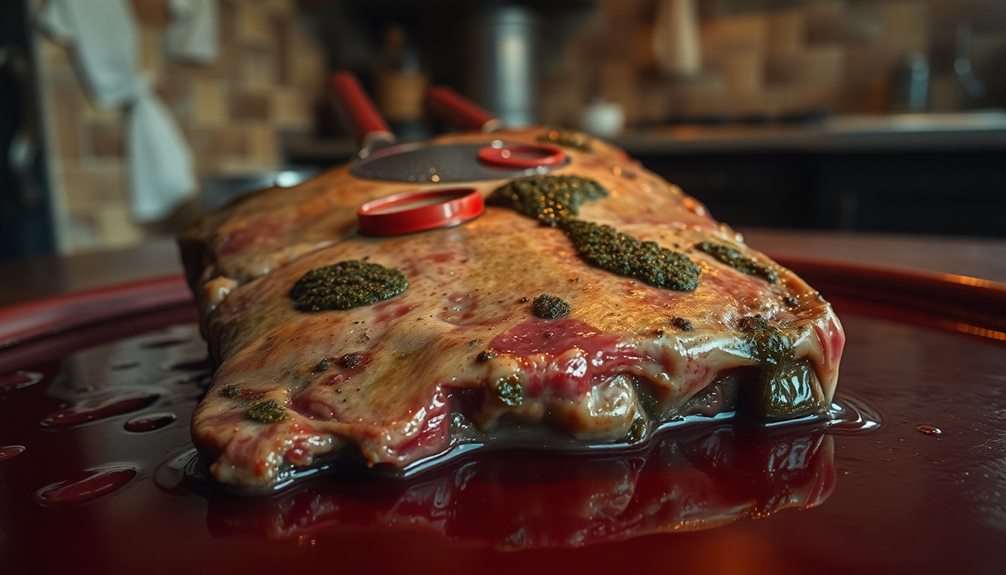
Ensuring your steak is safe to eat is essential for a satisfying meal. You want that juicy, mouth-watering flavor, right? But when steak goes bad, it can smell downright awful. Recognizing those warning signs is crucial. If you notice a sour, rancid, or off odor, it's best to toss it. Trust your nose; it's a reliable guide!
When you feel unsure, remember that it's always better to be safe than sorry. Look for changes in color, texture, or smell. Fresh steak should have a bright red hue and be firm to the touch. If it's slimy or discolored, it's time to say goodbye.
Storing your steak properly can also help prevent spoilage. Keep it in the fridge or freezer, and use it within a few days for the best taste.
Ultimately, being aware of what your steak should smell like keeps you healthy and happy. You deserve a delicious meal, so don't hesitate to check for freshness. Enjoy your cooking adventures, and always trust your senses!
With these tips, you'll find that steak can be both safe and scrumptious every time. Keep that grill fired up!
Frequently Asked Questions
Can Steak Smell Bad While Still Being Safe to Eat?
Yes, steak can have an off smell yet still be safe to eat. It's crucial to trust your senses, but always check for other signs like color and texture before deciding to consume it.
How Long Does It Take for Steak to Go Bad?
Steak typically lasts three to five days in the fridge, but it can spoil faster if not stored properly. Always check for discoloration or an off smell to ensure it's still safe to eat.
Does Cooking Affect the Smell of Spoiled Steak?
Cooking doesn't eliminate the smell of spoiled steak. If the meat's gone bad, you'll still notice an unpleasant odor during cooking. Trust your senses; if it smells off, it's best to throw it away.
Can the Smell of Bad Steak Linger in the Kitchen?
Yes, the smell of bad steak can definitely linger in your kitchen. Even after disposal, the odor can cling to surfaces and fabrics, making it essential for you to clean thoroughly to eliminate any traces.
What Should I Do if I Accidentally Eat Spoiled Steak?
If you accidentally eat spoiled steak, don't panic. Monitor your symptoms closely. Stay hydrated, and if you experience severe discomfort like vomiting or diarrhea, contact a healthcare professional for advice and potential treatment.
